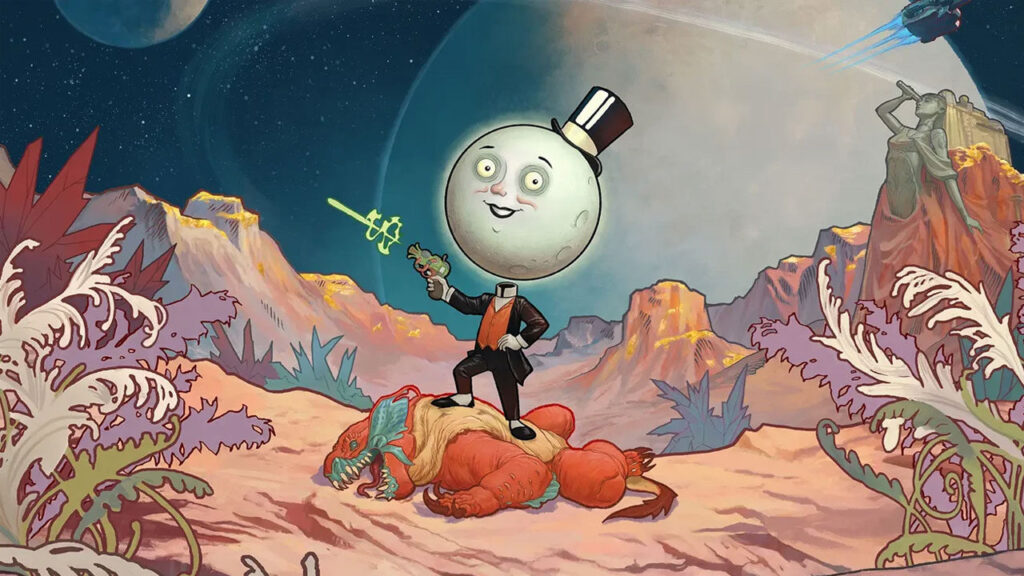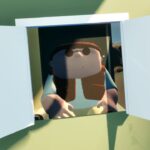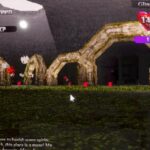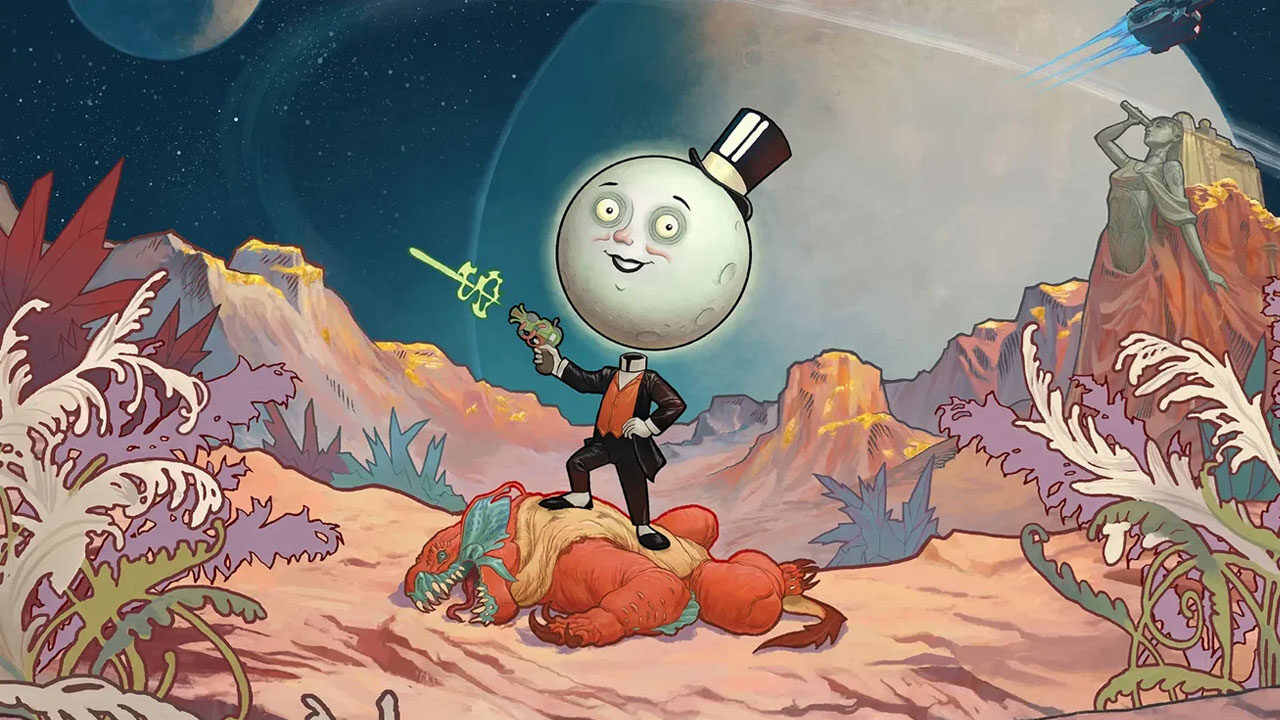
When The Outer Worlds launched in 2019, it managed to hit a rare balance between off-kilter corporate satire and heartfelt science fiction. It built on Obsidian’s signature humour. A universe where capitalism had gone galactic, and every moral decision came with a punchline. The sequel feels instantly familiar, yet more ambitious in scope, tone, and emotional range.
Sitting down with Game Director Brandon Adler, it’s clear that Obsidian wanted this follow-up to do more than simply expand the map. Hearing from Adler and finding out the team reworked combat from the ground up, deepened faction dynamics, and gave companions a level of independence that makes relationships feel real and sometimes volatile, really makes it feel like this is what the true goal of the first game was. Now, Outer Worlds 2 is a game that builds on what fans loved while daring to push harder into consequence, narrative weight, and player agency. And with Unreal Engine 5 powering it all, The Outer Worlds 2 looks and feels like a true next-generation evolution of a modern cult classic.
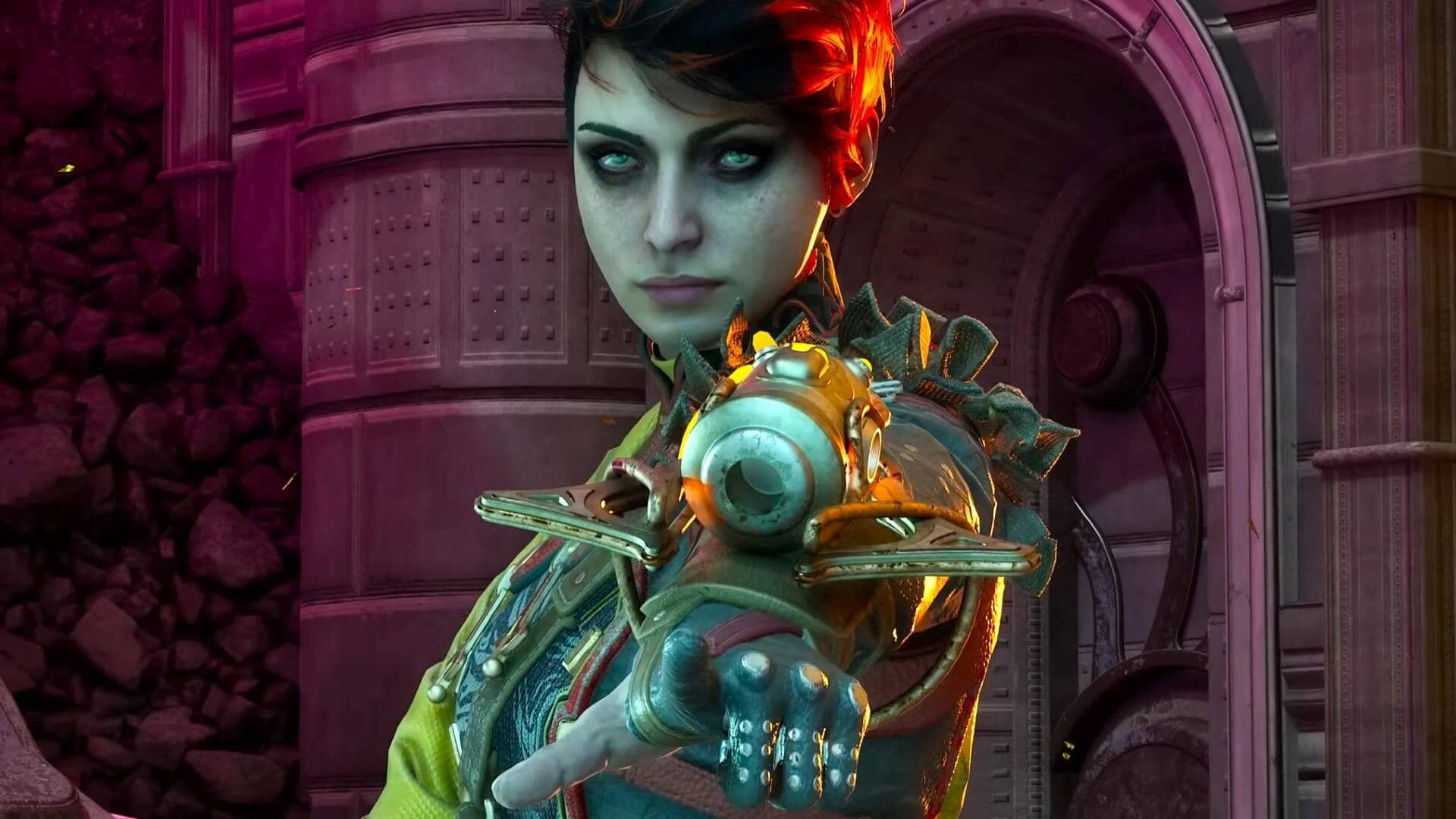
The Outer Worlds 2 manages that sequel feeling of being instantly familiar yet clearly more refined right out of the gate. When you first started looking at making a sequel, what was the thought process in deciding what to keep and what to completely rebuild?
Brandon Adler: We knew we had a strong foundation from the first game, so the key was identifying what had to stay versus what we could improve. The world’s personality – that dark, absurd humour and satirical edge – was definitely a keeper.
That’s the soul of The Outer Worlds, so we made sure the sequel still delivers that tone people loved. On the other hand, we saw big opportunities to refine systems under the hood. For example, we felt the first game’s RPG mechanics could be deeper, so we rebuilt things like perks, skills, and flaws from the ground up.
We asked, “How can we let players customize and roleplay in more interesting ways?” Building your character is a core aspect of RPGs, so we expanded those options significantly. In short, we kept what made the game feel like The Outer Worlds—the offbeat humour, the rich narrative choices—and we revamped and deepened the RPG. That way, returning fans feel at home, but also notice right away that The Outer Worlds 2 is offering them more depth and polish than before.
The original struck a great balance between corporate satire and genuine drama. This one feels more grounded in tone—it still hits emotionally and is funny, but it’s heavier in moments. Was that a conscious choice, or something that came out naturally through the story?
Adler: We did consciously aim for a somewhat more grounded tone in the sequel. The first game had a lot of silly corporate satire—which was great—but it could sometimes hit the same note repeatedly. This time around, we wanted to explore a wider range. Part of that came naturally with the story we wanted to tell, and part came from our creative leadership. Leonard Boyarsky, who co-directed the original and is the Creative Director on The Outer Worlds 2, led the narrative vision on this one, and his influence tends toward a slightly darker, more grounded vibe. So yes, you’ll feel a bit more weight in the story.
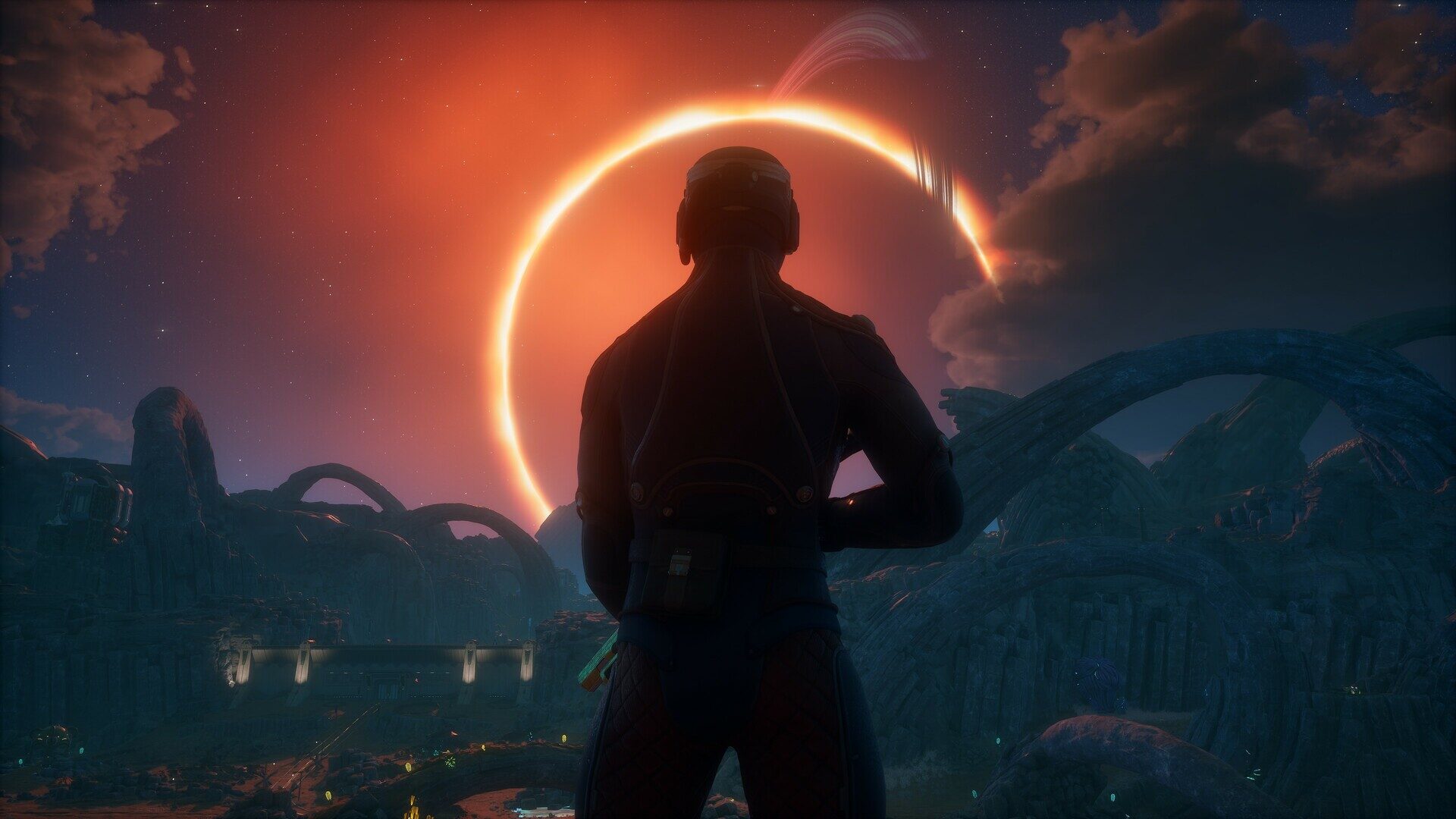
The corporations are still funny in an absurd way, but they’re also more ruthless – they’re not just punchlines; they can be genuinely threatening. That shift was intentional. We didn’t want to lose the humour (and we haven’t – there’s plenty of it), but we also wanted the stakes to feel real. People are always connected with the heart under the satire in the first game, and in The Outer Worlds 2, I think that heart shows itself in new ways.
You might laugh at one quest and then feel genuinely moved or uneasy in the next, and for us, that mix happened organically as we dug into the world’s new conflicts and themes. It’s still the same universe – just with a few more shades of light and dark this time.
Obsidian has a reputation for meaningful player choice, and The Outer Worlds really leaned into that. How much did you expand or refine that system for the sequel?
Adler: Player choice and reactivity were pillars for us. We really wanted to build on what we did the first time by making your decisions ripple out even further. One of the big ways is through factions. In The Outer Worlds 2, factions aren’t just window dressing – they are deeply woven into the main story and your endgame.
“We knew we had a strong foundation from the first game, so the key was identifying what had to stay versus what we could improve.”
Eventually, you will have to choose a side (or choose no side), and that decision has major consequences. We looked at games like Fallout: New Vegas for inspiration, where who you ally with can alter the entire ending. That’s the kind of impact we set out to achieve. So yes, choices should hit harder now. If you side with one faction, you might make an enemy of another, and we’ve designed the game to acknowledge that by sometimes cutting off content – in a way that makes sense and feels earned.
We’re not afraid for you to miss out on Quest B because you chose to support Faction A over C; that’s part of the experience. The flip side is that your playthrough opens up new content aligned with your choice. We’ve put a lot of effort into ensuring the world reacts logically to what you do.
After playing The Outer Worlds 2, one thing that stands out is how much smoother—and more chaotic, in a good way—the sequel plays compared to the original. What adjustments or improvements did you make to make encounters more dynamic and less predictable?
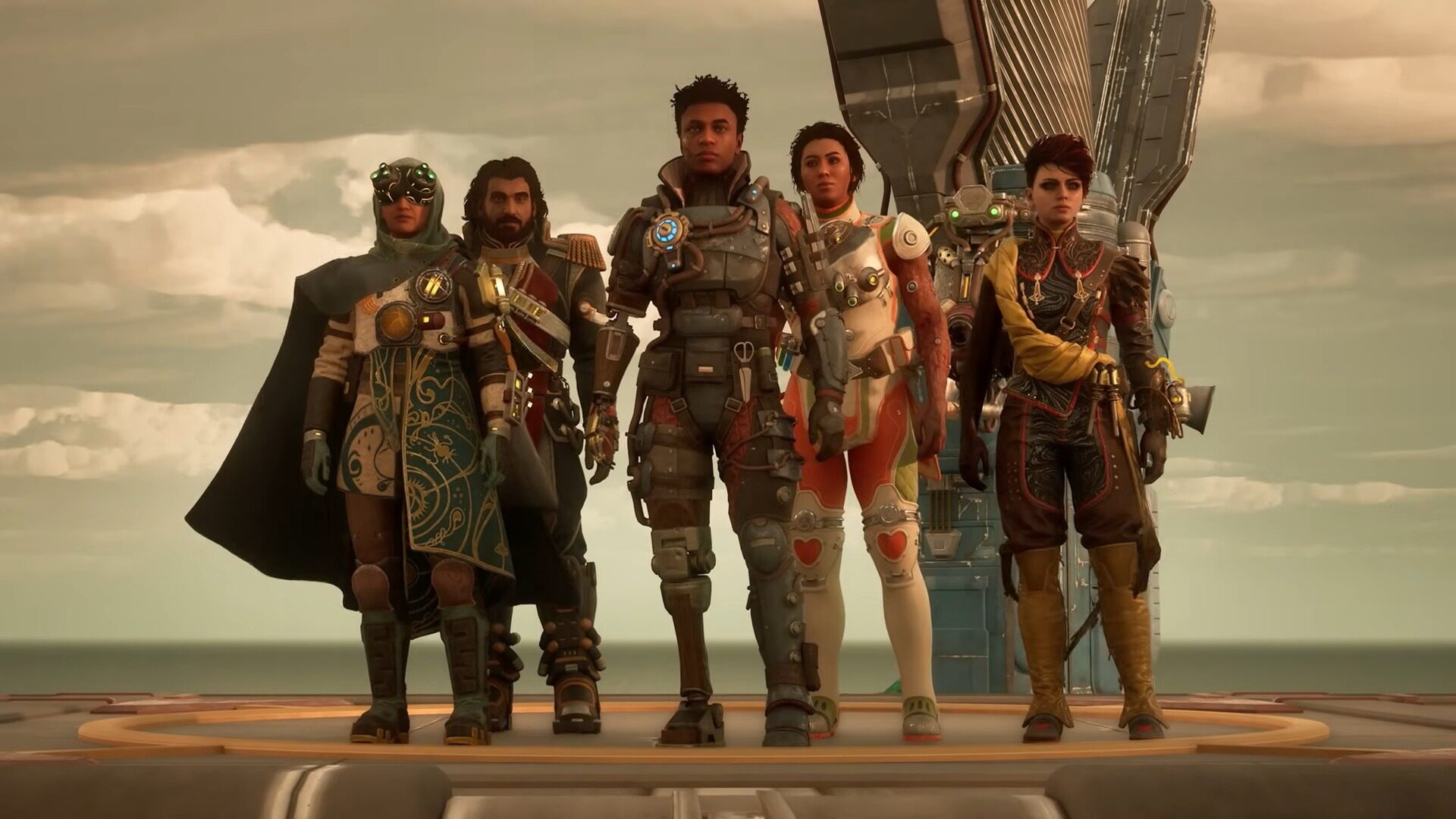
Adler: We took a hard look at the gameplay loops—combat, exploration, encounters—and pretty much overhauled anything that felt static. Combat in particular got a ton of love. We heard the feedback that the gunplay in the first game was solid but not spectacular, so we aimed to make it great.
We actually rebuilt our encounter system to allow for more variety in how fights play out. Enemies come at you in smarter ways now – different types will flank you or use abilities, so you can’t just predict every fight. We also upped the variety and distinctiveness of weapons across the board. Each weapon type has more of a unique identity and feel, which adds a bit of chaos (the good kind) to combat as you and your enemies mix it up with different tools.
Matt Singh, our Design Director, is a big Destiny 2 fan, and Bungie’s fluid combat was a guiding light for us in polishing the gunplay. We even consulted some folks who worked on Halo to fine-tune the shooting mechanics. Another big change is player mobility—we didn’t want you to feel glued to the ground. Now you can slide, jump in more interesting ways, and generally move around the battlefield with greater freedom.
When you put all that together, the combat encounters end up feeling a lot more dynamic. In playtests, we’ve seen players come up with wild tactics—combining gadgets, using verticality, etc.—and it’s super satisfying to watch. It feels less like you’re executing a routine and more like you’re thinking on your feet, which is exactly what we wanted for the sequel.
The companions were a huge part of the first game’s identity—funny, flawed, and human. How did you deepen those relationships in the sequel?
Adler: The companions were many people’s favourite parts of the first game, so we knew we had to do them justice and then some. This time, we really treated companions as independent characters with their own minds, not just sidekicks. What that means in practice is they can disagree with you—strongly. In fact, if you push a companion far enough, they might leave or even turn on you, which is something we never did in the first game.
We wanted to explore the idea that your companions have limits and personal codes. They’ll actually warn you if you’re about to cross a line with them – like, “Hey, if you do this, I can’t stick with you” – giving you a chance to think twice. It makes those relationships feel so much more real and high-stakes.
On the flip side, if you do right by them and build that trust, they’ll have your back even in the toughest moments. We’ve also interwoven the companions with the faction system. Many companions in The Outer Worlds 2 come from a particular faction, so they have skin in the game.
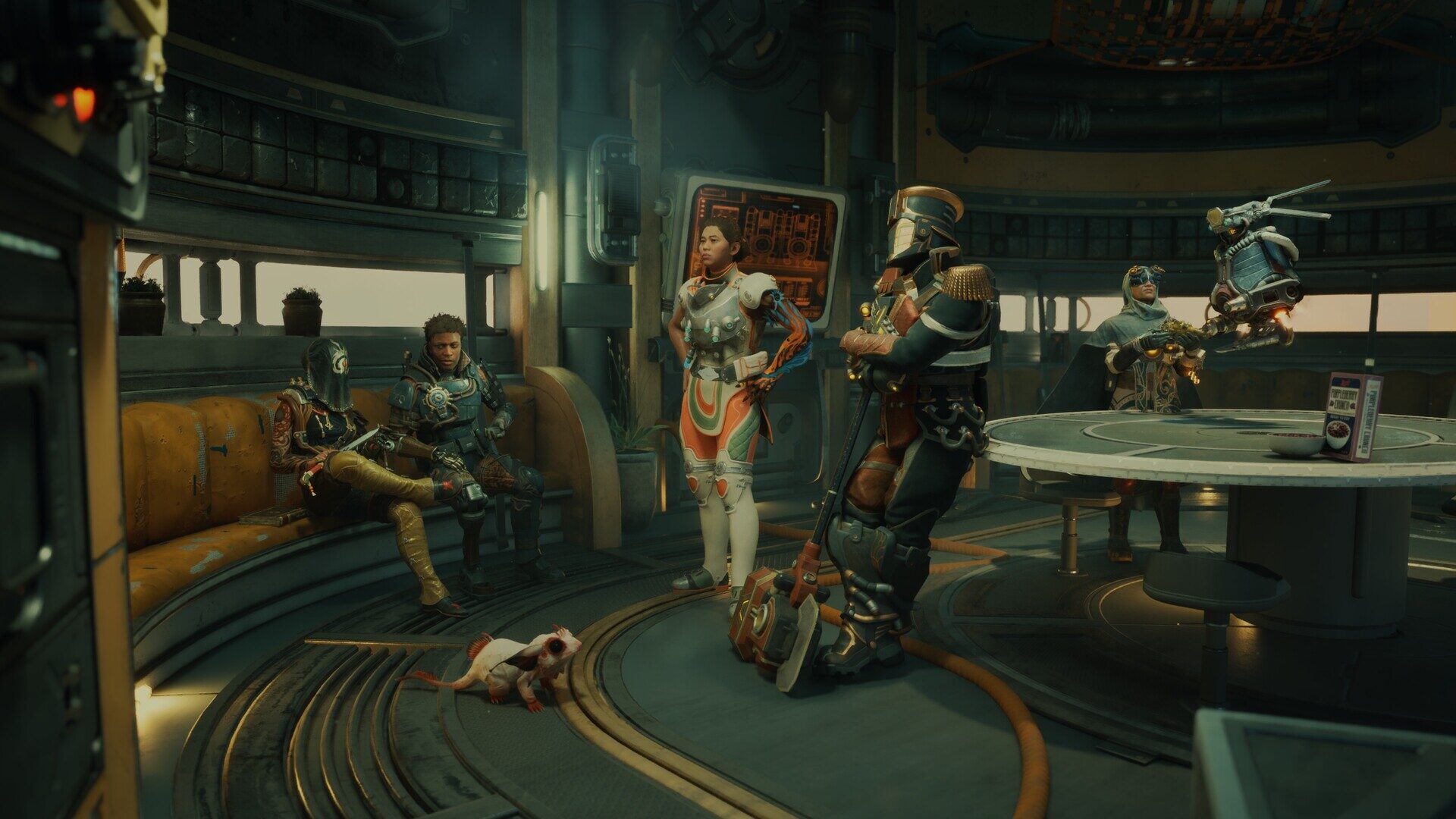
If you start massacring people from, say, a faction one of your companions belongs to, expect a confrontation about it. It can lead to some tough choices—do you change your approach, or do you risk that relationship? Another aspect we improved is their gameplay utility. In the first game, companions gave you flat stat boosts, which were useful but not exactly exciting. Now we’ve designed them to fill roles in combat – you can specialize them a bit, like making one a healer type or another a heavy damage-dealer, and they have abilities that synergize with different player builds.
So, beyond just personality and story depth, they’re also more impactful in how you tackle encounters. All of these changes make companions a deeper part of the experience. They’re fun, they’re flawed, and sometimes they might call you out or save your butt in ways that will surprise you. I’m really excited for players to get to know them better.
Exploration also feels much bigger this time. You can sense that Obsidian touch everywhere, but it’s clearly more open. How do you balance scale with tight design?
Adler: Expanding the scale of exploration was a big goal for us, but we were always mindful of keeping that handcrafted feel. The way we balanced it was to design our larger areas with a lot of intention. Instead of a fully open world, we have these big, open zones – much bigger than in the first game – but each one is built around meaningful content.
“The corporations are still funny in an absurd way, but they’re also more ruthless — they’re not just punchlines; they can be genuinely threatening.”
We give the player a clear overarching goal in a region, then we basically say, “Okay, go figure out how you want to accomplish this”. And we have multiple solutions baked into every region. Take Paradise Island, our first major area, for example. You need to reach a certain facility, but the ways you can do that are pretty diverse. You can charge straight through an enemy-held bridge, or maybe talk your way past the guards, or use stealth gadgets to bypass them.
You might convince a different faction to come help you storm it, or explore elsewhere on the island to find a completely alternate route (perhaps involving a gadget like a Zyranium Shield to get around the bridge). We basically design the area as a sandbox that supports various playstyles—combat, dialogue, tech, stealth, etc.
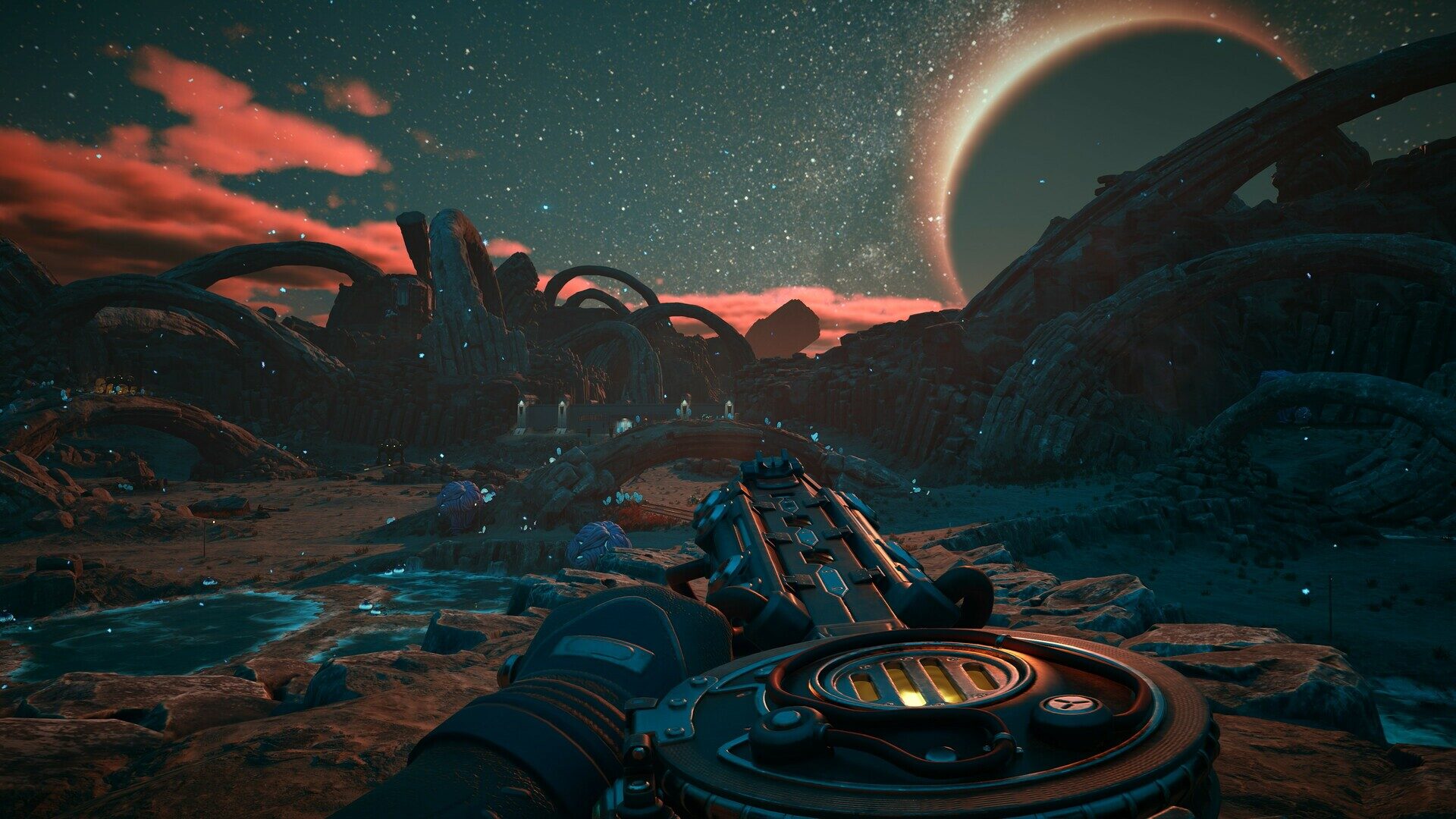
The “Obsidian touch” is in that tight design of these options. We plan them out early—we literally sit down and map out, say, three or four key points of interest (POI) that can impact the main mission in each region. Then, as we develop, we iterate. We playtest and ask, “What crazy thing might a player try here?” If we realize a player might reasonably attempt something we hadn’t planned, we often go back and add a way to support it. In Paradise Island, we ended up adding an opportunity to that bridge PoI I was referencing earlier.
You can get help from a nearby forward operating base because we figured players would wonder if they could turn that situation to their advantage. It’s a mix of planning and organic adjustment as we see how players explore.
So even though the world is bigger and more open, it’s all very deliberately crafted. We want players to feel like every corner of these big areas has something interesting—some story, some challenge, some reward. It’s a big world, but it’s dense with purpose, which is how we strike that balance.
Visually, this game feels far more cinematic. How closely did the art and design teams collaborate to build that space-opera atmosphere?
Alder: Our art and design teams worked hand in hand to create the game’s look and atmosphere. From the outset, we had a vision of this game as a pulpy space opera —on a slightly grander scale, with cinematic visuals—and we knew the art had to reinforce the narrative at every step.
One cool thing we did was develop distinct visual identities for each of the major factions in the game, which was a real collaboration between art and design. Design would define what a faction stood for philosophically, and art would translate that into shapes, colours, and motifs you see in the world.
So, for example, the Protectorate faction is authoritarian and militaristic, and our art director gave them a very angular, rectangular design language with bold colours – their buildings, their logo, their armour all reflect that rigid, order-first mindset.
Then you have the Order of the Ascendant – a more spiritual, mystical group – and you’ll notice circles, halos, and more flowing designs in their aesthetic, almost like constellations and celestial themes.
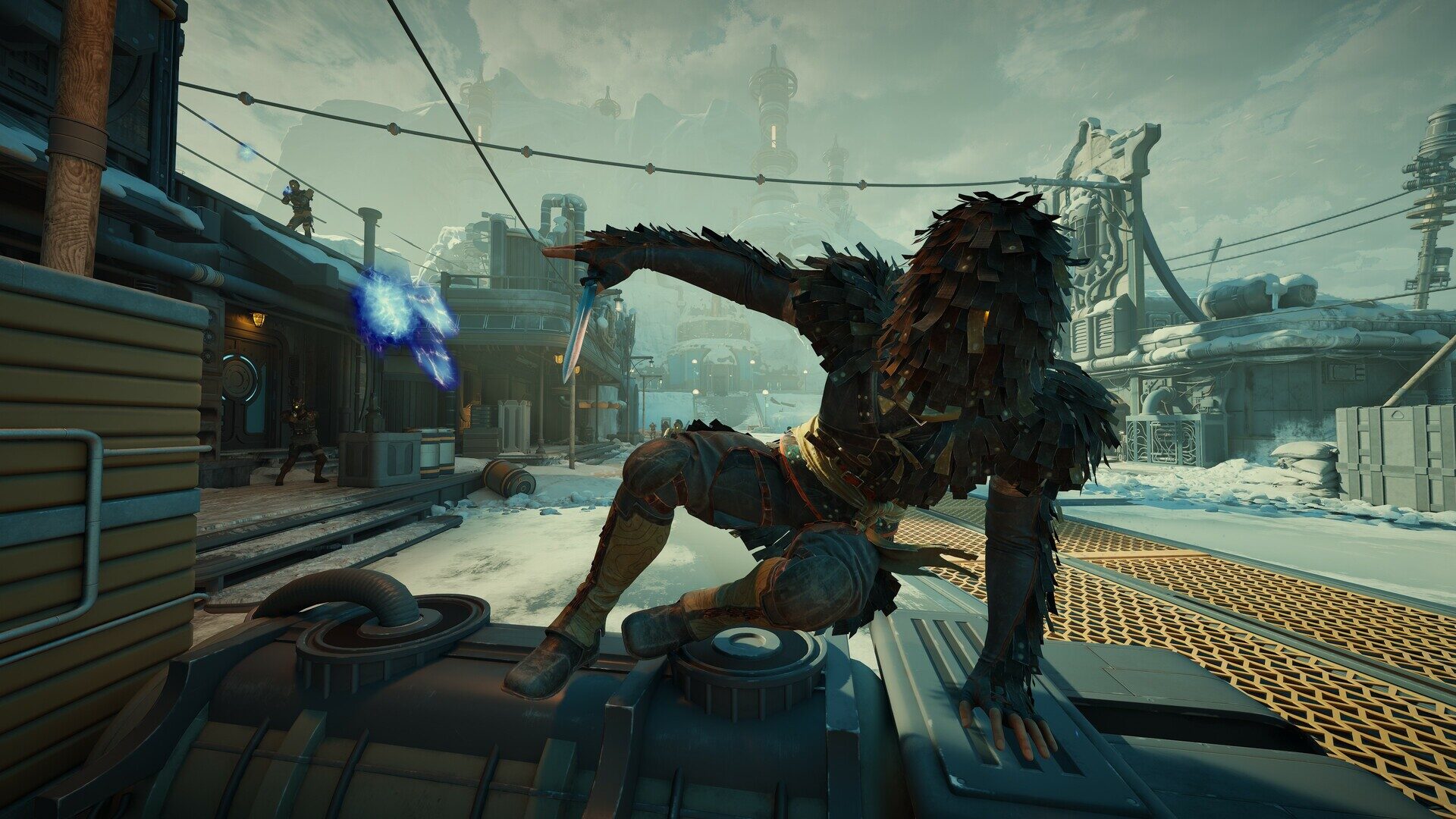
Auntie’s Choice, being a big corporate conglomerate, has its own visual style too—kind of a chaotic blend of consumerist flair and industrial utility (and a signature diamond pattern that shows up in their tech). All of this was very deliberate. The art team was involved early in story discussions, and vice versa, so that we were always reinforcing the atmosphere we wanted.
When you walk into a new area, the hope is that the visuals instantly tell you something about who runs that place and what might be going on there. Beyond just faction stuff, art and design worked together on things like lighting and set pieces to make sure the emotional tone of each moment lands.
If we’re doing a big climactic mission, the art team is tweaking the skybox, the colour palette, and the geometry to support that feeling of high stakes or wonder. The “space-opera” atmosphere comes through because everyone, from narrative designers to concept artists, was aligned on the tone we were aiming for.
That retro-futurist look is central to the series’ identity. How did you modernize it without losing what made it so striking?
Adler: We were very mindful of preserving that retro-futurist aesthetic – it’s such a hallmark of the series. The game still has that “alternate future as imagined by the past” vibe: the art nouveau (not art deco!) elements in the architecture mixed with golden age sci-fi aesthetics. We didn’t want to throw out what made that style striking; instead, we wanted to enhance it. Part of modernizing it was simply leveraging the new tech to add more detail and richness. In The Outer Worlds 2, the streets and colonies feel more alive—more holographic ads flickering, more elaborate costumes, more nuanced lighting—all of which keeps the retro vibe but makes it shine brighter.
“If you push a companion far enough, they might leave or even turn on you, which is something we never did in the first game.”
We actually had fun with the little details: the Auntie’s Choice faction, for instance, has a logo with old-school rocket ships on it as a nod to classic pulp sci-fi, and those kinds of touches are everywhere if you look. So, the short version: we updated the graphics and expanded the variety, but we were careful that any new design fits the established aesthetic.
The game should instantly remind you of the first The Outer Worlds when you see it, just with even more wow factor due to the jump in visual fidelity. Our art team did an amazing job walking that line—it’s simultaneously nostalgic and fresh.
Obsidian’s been juggling a few major projects lately, including Avowed. Did any lessons from those teams influence The Outer Worlds 2?
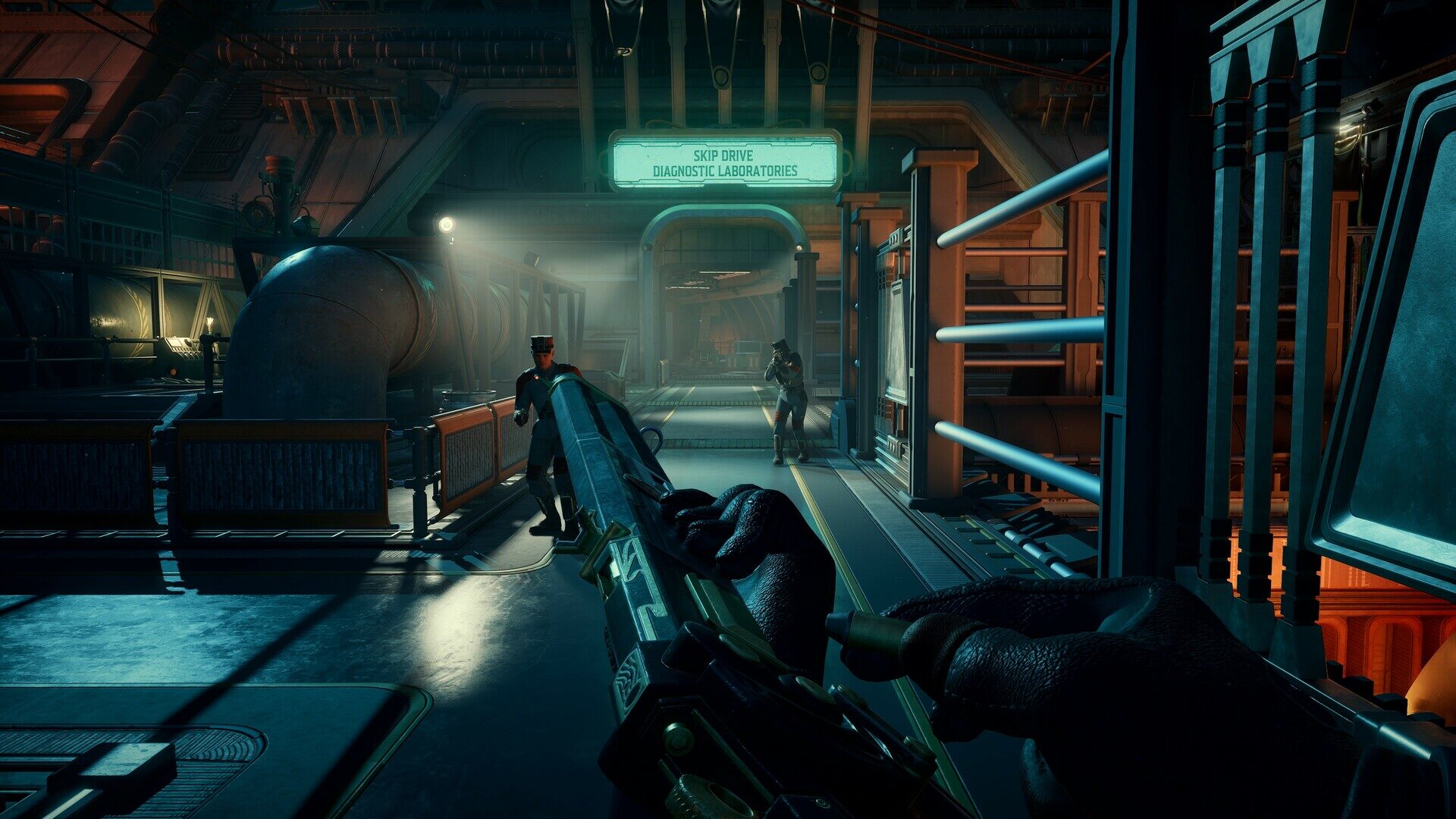
Adler: Juggling multiple projects is something Obsidian has done for a long time, so we have a pretty good system for it.
While the The Outer Worlds 2 team was mostly separate from the Avowed team, there’s definitely a shared studio philosophy and occasional cross-pollination. We’re all under one roof (figuratively and mostly literally speaking), and there’s a lot of hallway conversation like, “Hey, we tried this approach on Avowed, it worked well, and maybe you guys could use it.”
So lessons and ideas do circulate. One concrete example is that, towards the end of Avowed’s development, some of their folks—lighting artists, audio designers, etc.—rolled onto The Outer Worlds 2 to help us finish up. They brought with them the experience and techniques they’d been using, which gave us a boost. In terms of design philosophies, both games prioritize player agency, rich storytelling, all that good stuff, because that’s just in Obsidian’s DNA.
This is the first Outer Worlds built in Unreal Engine 5. How did that change development and open new creative opportunities?
Adler: Moving to Unreal Engine 5 was a pretty big leap for us. The development process had its learning curve, but UE5 opened up a lot of creative possibilities that simply weren’t on the table before. The most obvious change is in our world design.
With the new engine and current hardware, we were able to create much larger and more detailed areas than in the first game. Paradise Island, the first region, is a great example. It’s huge and filled with dense foliage, vibrant colours, lots of interactive elements – and we don’t have to break it up into a dozen small levels. We couldn’t have done an area that expansive and visually rich on the old tech, certainly not without painful load times or performance issues.
“Instead of a fully open world, we have these big, open zones – much bigger than in the first game – but each one is built around meaningful content.”
UE5 lets us push that envelope and make it work. From a creative standpoint, that meant we could think bigger when designing missions and environments. “Could we do this big set piece? Could we have this many NPCs in one scene? Could we light this entire canyon with dynamic bioluminescent plants?” – the answer was more often “Yes, we can figure that out now,” whereas before it might’ve been “Eh, better not, the engine might not handle it.”
The new lighting and rendering capabilities also contributed to that more cinematic feel people are noticing. We’re using dynamic lighting and higher resolution assets that make the game look really great. In practical terms, UE5 changed some of our workflows (we had to update our tools and get used to new systems like World Partition for the larger zones), but once we got comfortable, it really streamlined a lot of things.
The first game built a loyal fanbase through its humour and characters. How much did community feedback shape the sequel?
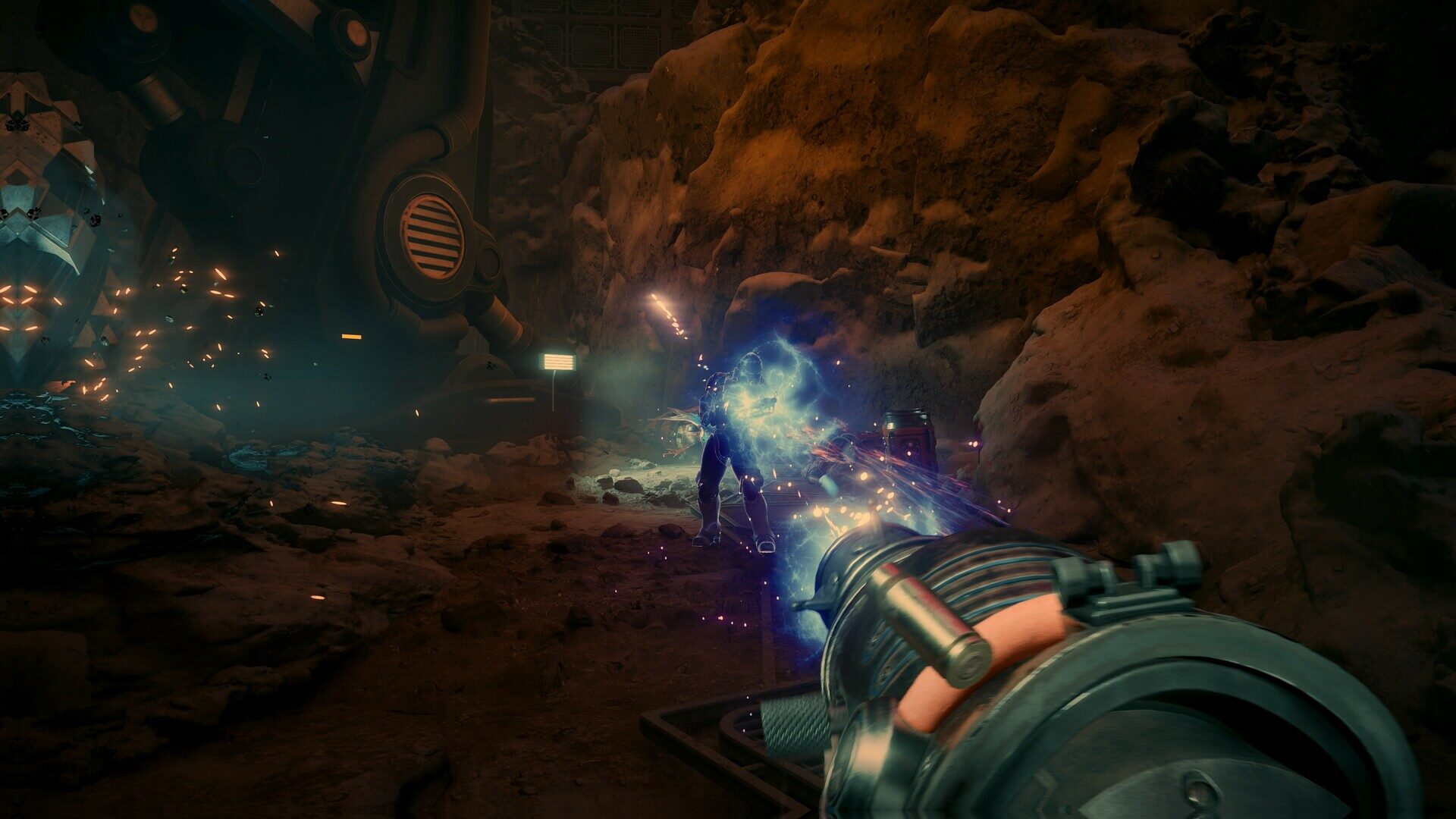
Adler: We listened to the fans a lot when making this sequel. Community feedback was like our compass on what to fine-tune. One very tangible example: the addition of a third-person camera. That was 100% driven by player feedback.
So many people asked for the option to toggle perspective, and even though it was non-trivial to implement, we made it a priority because the community made it clear it mattered to them. Another big area of feedback was around the RPG mechanics and combat.
Players enjoyed the first game, but some wanted more depth – more skills to play with, more reactive combat, that sort of thing. We took that to heart. We expanded the perk and flaw systems, gave combat a serious overhaul, and generally leaned into the “deeper RPG” angle precisely because that’s what we were hearing.
And of course, fans loved the story and characters, and they told us what they especially connected with – for instance, Parvati and the companions were a highlight for many, so we put a lot of effort into making companions even more robust and engaging this time. The humour and tone, we knew not to mess with that core appeal, even as we evolved it, because the community’s positive response to it in TOW1 was strong.
In many ways, the community kind of validated the path we wanted to take. We thought players would want more reactivity, and their feedback said “yes, absolutely.” We thought they’d enjoy a bigger world – feedback said “please, bigger and more to explore.” So it was encouraging. Game development can be a bit of an echo chamber, so having that direct line to player opinions helped us prioritize and sometimes helped us course-correct.
At the end of the day, we make these games for the fans, so if they’re all asking for something and we can do it without breaking the game, why wouldn’t we? This sequel is definitely a love letter to everyone who supported the first game and voiced what they’d like to see next.
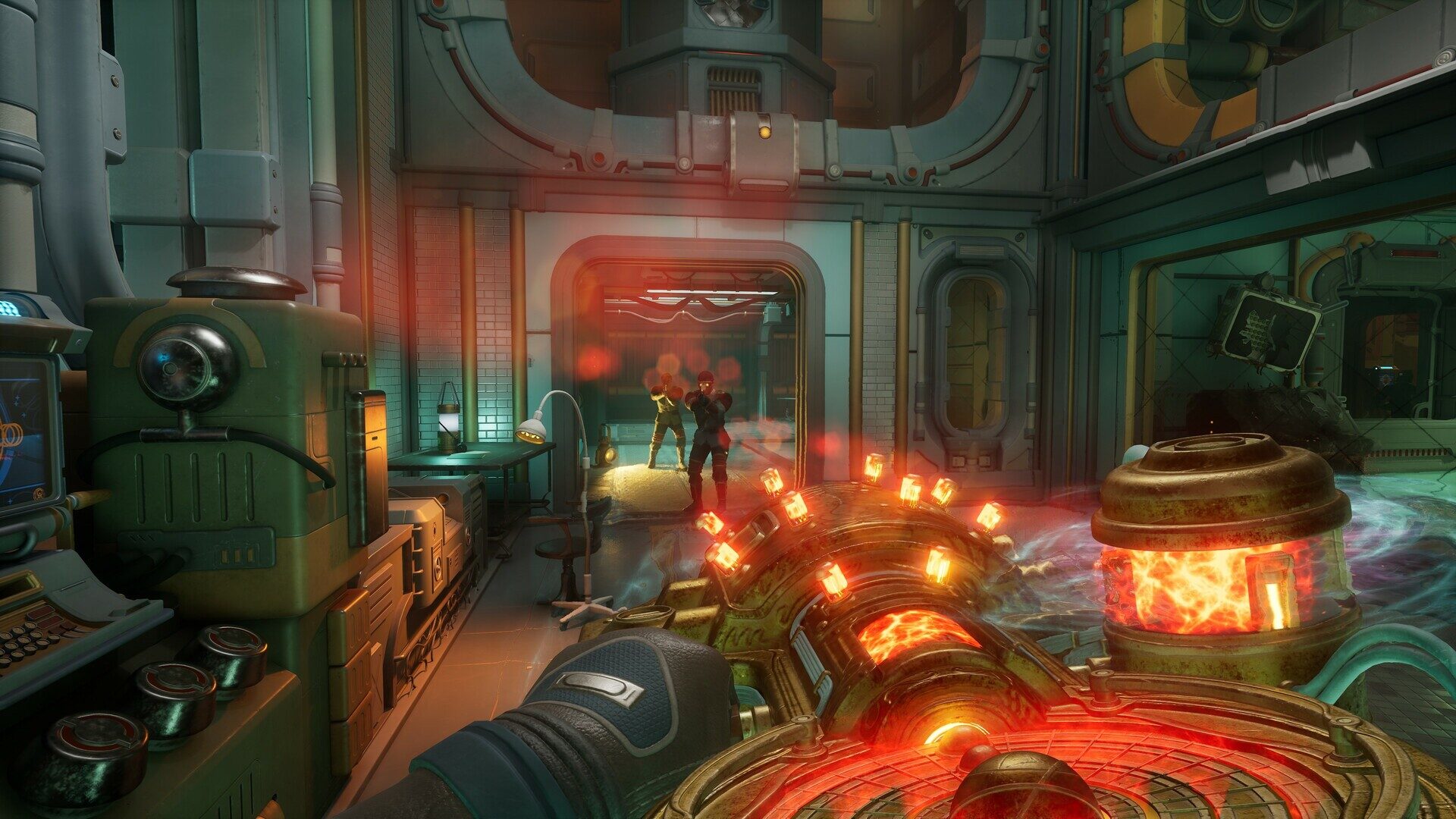
After spending years in this world, what’s the moment or idea that still sticks with you the most?
Adler: It’s hard for me to choose just one. There is a moment at the bridge PoI I was referencing earlier. It’s important and personal to me because it was something involving one of your companions – maybe an ultimate betrayal of the trust they put in you.
Many developers didn’t want it in the game and tried to push against having this moment, but it was important to me, and it helped set the tone for the rest of your game. Your choices matter, and they have consequences… This piece of content is the embodiment of that philosophy to me.

